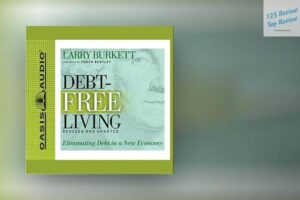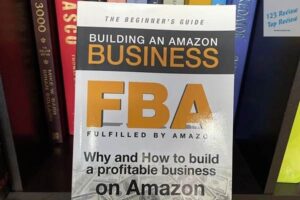“Meet the Frugalwoods” by Elizabeth Willard Thames is not just another personal finance book; it’s an inspiring and deeply personal chronicle of a family’s radical journey toward financial independence and a life of intentional simplicity. The Thames family, known as the Frugalwoods, embarked on a path that led them away from the consumer-driven, high-paced urban lifestyle and toward a more meaningful existence centered around frugality, sustainability, and self-sufficiency.
In this article, 123 Review delves into the key themes and lessons from the book, offering a detailed exploration of how the Frugalwoods achieved financial independence, the challenges they faced, and the profound impact their journey has had on readers and followers.
The Journey to Financial Independence
Overcoming Urban Disillusionment
Elizabeth and her husband, Nate, were once part of the typical urban professional class, living in Cambridge, Massachusetts. They had good jobs, a comfortable home, and were, by all appearances, living the American dream. However, beneath this facade of success, they felt a growing sense of disillusionment. The relentless pursuit of career advancement and material possessions left them feeling unfulfilled and disconnected from what truly mattered. The couple began to question the conventional wisdom that equates happiness with wealth and consumption. This period of urban disillusionment marked the beginning of their journey toward financial independence.

The realization that their lives were being dictated by their jobs and a consumerist culture led them to reevaluate their priorities. They recognized that their constant striving for more—more money, more possessions, more status—was not bringing them the happiness or satisfaction they desired. This epiphany was the turning point that set them on a new path, one that would lead them away from the city and toward a simpler, more intentional way of living.
Embracing Frugality as a Lifestyle
Frugality became the cornerstone of the Frugalwoods’ new lifestyle. But this was not about mere penny-pinching or deprivation; it was about embracing a mindset that values experiences, relationships, and personal fulfillment over material goods. The Thames family decided to live with less, but in doing so, they discovered that they had so much more—more time, more freedom, and more happiness.
Their approach to frugality was holistic and comprehensive. They redefined their needs and wants, focusing on what truly added value to their lives. By reducing their spending to the essentials and eliminating wasteful habits, they were able to save a remarkable 70% of their income. This dramatic shift in their financial habits was not just about cutting costs; it was a conscious decision to align their spending with their values and long-term goals.
The Frugalwoods’ story demonstrates that frugality is not about making sacrifices but about making choices that lead to a richer, more fulfilling life. By rejecting the consumerist mindset and embracing simplicity, they were able to create a lifestyle that was both financially sustainable and deeply rewarding.
Strategies for Saving: Key Techniques
Achieving financial independence required the Frugalwoods to adopt a variety of saving strategies, each carefully designed to maximize their savings without compromising their quality of life. One of the key techniques they employed was meticulous expense tracking. By carefully monitoring every dollar they spent, they were able to identify areas where they could cut back and redirect those funds toward their savings goals.
Another crucial strategy was making intentional purchasing decisions. The Frugalwoods adopted a minimalist approach, buying only what they truly needed and carefully considering each purchase. This method helped them avoid impulse buys and unnecessary expenses, allowing them to focus on acquiring items that provided long-term value.
The Frugalwoods also prioritized reducing major costs, such as housing and transportation. They made a conscious decision to live below their means, opting for a smaller, more affordable home and cutting back on commuting costs. This focus on big-ticket items had a significant impact on their overall savings, enabling them to reach their financial goals faster.
In addition to these strategies, the Frugalwoods embraced a DIY (do-it-yourself) approach to many aspects of their lives. From home repairs to gardening, they found that doing things themselves not only saved money but also provided a sense of satisfaction and self-reliance. This hands-on approach allowed them to reduce expenses while gaining valuable skills and knowledge.
These key techniques underscore the importance of conscious spending and intentional living. The Frugalwoods’ success in achieving financial independence serves as a powerful example of how small, consistent changes in spending habits can lead to significant financial gains over time.
Understanding Financial Freedom
Defining Financial Independence
Financial independence is often misunderstood as simply having enough money to retire early or quit your job. However, for the Frugalwoods, financial independence meant much more—it was about reclaiming control over their lives and having the freedom to live according to their values. Financial independence, in their view, is the ability to choose how you spend your time, pursue your passions, and focus on what truly matters to you.
This concept of financial independence goes beyond just financial security; it’s about creating a life that aligns with your personal values and goals. For the Frugalwoods, it meant breaking free from the societal pressures to conform to a certain lifestyle and instead crafting a life that was rich in experiences, relationships, and personal fulfillment. Financial independence gave them the freedom to prioritize their time and energy on what they loved most, rather than being tied to the demands of a traditional career.
The Role of Investments in Achieving Goals
Investments played a crucial role in the Frugalwoods’ journey to financial independence. Rather than relying solely on savings, they understood the importance of growing their wealth through smart investments. The Frugalwoods adopted a simple but effective investment strategy, focusing on low-cost index funds that provided broad market exposure with minimal risk.
This strategy allowed them to benefit from the power of compound interest, where the returns on their investments generated additional earnings over time. By starting early and consistently investing a portion of their income, the Frugalwoods were able to build a substantial financial cushion that would support their goal of early retirement and financial independence.
Their approach to investing was guided by the principles of simplicity and long-term thinking. They avoided the temptation to chase high-risk, high-reward investments and instead focused on steady, reliable growth. This disciplined approach not only minimized their financial risk but also provided them with the peace of mind that comes from knowing their financial future was secure.
The Frugalwoods’ investment strategy is a reminder of the importance of starting early and staying consistent with your financial goals. By making smart, informed investment decisions, they were able to accelerate their journey to financial independence and create a stable financial foundation for their future.
Maintaining a Balance Between Work and Personal Life
One of the most significant benefits of achieving financial independence is the ability to maintain a balance between work and personal life. For the Frugalwoods, financial independence meant the freedom to reclaim their time and focus on what was most important to them—family, hobbies, and personal growth.
Before embarking on their journey, Elizabeth and Nate found themselves caught in the all-too-familiar trap of working long hours, sacrificing personal time for career advancement, and feeling constantly overwhelmed by the demands of their jobs. Financial independence allowed them to step back from this exhausting cycle and create a more balanced, fulfilling life.
By prioritizing their personal values and goals over their careers, the Frugalwoods were able to spend more time with their children, pursue their passions, and enjoy the simple pleasures of life. This balance is crucial for overall well-being and underscores the importance of aligning your financial goals with your personal values.
The Frugalwoods’ experience demonstrates that financial independence is not just about money—it’s about creating the life you want to live. By achieving financial freedom, they were able to prioritize what mattered most to them, leading to a happier, more balanced life.
Lessons Learned from Frugality
Practical Money-Saving Tips
Throughout their journey, the Frugalwoods developed a wealth of practical money-saving tips that can be applied by anyone, regardless of income level. These tips are grounded in the principles of mindful spending and intentional living, and they emphasize the importance of focusing on needs rather than wants.
One of the most effective strategies the Frugalwoods used was meal planning and bulk purchasing. By planning their meals in advance and buying ingredients in bulk, they were able to reduce food waste and significantly lower their grocery bills. This approach not only saved money but also ensured that they were eating healthy, home-cooked meals.
Another practical tip was eliminating unnecessary expenses. The Frugalwoods carefully examined their spending habits and identified areas where they could cut back, such as dining out, entertainment, and subscription services. By focusing on what truly added value to their lives, they were able to redirect those funds toward their savings goals.
The Frugalwoods also emphasized the importance of buying used or second-hand items whenever possible. From clothing to furniture, they found that buying used not only saved money but also reduced their environmental impact. This approach aligns with their values of sustainability and intentional living.
These practical tips highlight the power of small, consistent changes in spending habits. By adopting these strategies, the Frugalwoods were able to achieve their financial goals and create a lifestyle that was both financially sustainable and personally fulfilling.
DIY Projects and Their Impact on Budgeting
A significant aspect of the Frugalwoods’ frugal lifestyle was their willingness to take on DIY (do-it-yourself) projects. Whether it was home renovations, gardening, or crafting, they found that doing things themselves not only saved money but also provided a sense of accomplishment and self-reliance.
One of the most impactful DIY projects the Frugalwoods undertook was renovating their rural Vermont home. Rather than hiring contractors, they learned how to do much of the work themselves, from painting and tiling to carpentry and landscaping. This hands-on approach saved them thousands of dollars and allowed them to create a home that truly reflected their values and vision.
Gardening was another area where the Frugalwoods embraced DIY. By growing their own fruits and vegetables, they were able to reduce their grocery bills while enjoying fresh, organic produce. Gardening also provided them with a sense of connection to the land and a greater appreciation for the food they consumed.
In addition to home improvement and gardening, the Frugalwoods found creative ways to save money through DIY crafting. From homemade gifts to upcycled furniture, they discovered that crafting not only reduced costs but also allowed them to express their creativity and personal style.
The Frugalwoods’ DIY projects are a testament to the power of resourcefulness and creativity in achieving financial independence. By taking on these projects themselves, they were able to significantly reduce their expenses while gaining valuable skills and experiences.
The Psychological Benefits of Simple Living
Beyond the financial advantages, the Frugalwoods discovered profound psychological benefits from living simply. By decluttering their lives and focusing on what truly mattered, they experienced reduced stress, greater contentment, and a stronger sense of purpose.
One of the key psychological benefits of simple living is the reduction of stress. The Frugalwoods found that by eliminating unnecessary possessions and focusing on experiences rather than material goods, they were able to reduce the mental clutter that often accompanies a consumer-driven lifestyle. This simplification of their lives led to a greater sense of peace and well-being.
Another psychological benefit was the increased sense of contentment. By shifting their focus from acquiring more to appreciating what they already had, the Frugalwoods found that they were more satisfied with their lives. This contentment was not tied to their financial success but rather to the fulfillment they found in living according to their values.
Simple living also provided the Frugalwoods with a stronger sense of purpose. By aligning their actions with their values, they were able to create a life that was meaningful and intentional. This sense of purpose gave them the motivation to continue on their journey and the resilience to overcome challenges.
The psychological benefits of simple living are an important aspect of the Frugalwoods’ story. Their experience shows that financial independence is not just about money; it’s about creating a life that is rich in meaning, fulfillment, and happiness.
The Frugalwoods’ Homesteading Experience
Transitioning to Rural Life
A pivotal moment in the Frugalwoods’ journey was their decision to leave the city and move to a rural homestead in Vermont. This transition was driven by their desire to live closer to nature, reduce their environmental footprint, and become more self-sufficient.
Moving from a bustling urban environment to a remote, rural setting was a significant change for the Frugalwoods. It required them to adapt to a new way of life, one that was slower-paced but also more physically demanding. However, this transition was not just about changing their location; it was about embracing a new lifestyle that aligned with their values of simplicity and sustainability.
The decision to move to the country was motivated by a desire to reconnect with nature and live in harmony with the environment. The Frugalwoods wanted to reduce their reliance on external resources and live a more self-sufficient life. This move allowed them to focus on homesteading, growing their own food, and living off the land.
While the transition to rural life presented its challenges, it ultimately brought the Frugalwoods closer to their goal of living a simpler, more intentional life. The move allowed them to fully immerse themselves in their frugal lifestyle and deepen their connection to the natural world.
Building a Self-Sufficient Lifestyle
Homesteading was a central part of the Frugalwoods’ journey toward financial independence. By building a self-sufficient lifestyle, they were able to reduce their living costs, minimize their environmental impact, and create a more sustainable way of life.
One of the key aspects of their self-sufficient lifestyle was growing their own food. The Frugalwoods dedicated a significant portion of their land to gardening, cultivating a variety of fruits, vegetables, and herbs. This not only provided them with fresh, organic produce but also reduced their reliance on grocery stores and lowered their food expenses.
In addition to gardening, the Frugalwoods raised animals, including chickens and goats, which provided them with eggs, milk, and meat. This livestock not only contributed to their self-sufficiency but also enhanced their connection to the land and the natural cycles of life.
The Frugalwoods also focused on reducing their energy consumption and relying more on renewable resources. They installed solar panels, insulated their home to reduce heating costs, and practiced conservation techniques to minimize their use of electricity and water. These efforts not only saved money but also aligned with their values of sustainability and environmental stewardship.
Building a self-sufficient lifestyle required hard work, dedication, and a willingness to learn new skills. However, the rewards were substantial. The Frugalwoods were able to create a life that was not only financially sustainable but also deeply connected to the land and the natural world.
Community Engagement and Support
Despite their rural location, the Frugalwoods found that community engagement and support were essential to their homesteading experience. While they sought a life of independence, they also recognized the importance of building connections with others and contributing to the well-being of their community.
In their new rural environment, the Frugalwoods discovered a strong sense of community among their neighbors. They engaged with local residents, participated in community events, and supported local businesses. This involvement provided them with social connections and a support network that enriched their homesteading experience.
The Frugalwoods also found that community engagement extended beyond their immediate surroundings. Through their blog and book, they built a virtual community of like-minded individuals who shared their values of frugality, sustainability, and intentional living. This online community provided a platform for sharing ideas, offering support, and fostering a sense of camaraderie among those pursuing similar goals.
Community engagement was not just about receiving support; it was also about giving back. The Frugalwoods actively contributed to their community by sharing their knowledge, skills, and resources. Whether it was helping a neighbor with a DIY project or offering advice to a fellow homesteader, they recognized the importance of mutual support and cooperation.
The Frugalwoods’ experience highlights the importance of community in achieving financial independence and living a fulfilling life. While self-sufficiency is a key goal, they also understood that true independence does not mean isolation. Instead, it involves building connections, supporting others, and contributing to the well-being of the broader community.
Challenges and Adaptations
Financial Challenges of Homesteading
While homesteading offered many rewards, it also presented significant financial challenges. The Frugalwoods found that maintaining a rural property, dealing with unpredictable weather, and managing a self-sufficient lifestyle required careful budgeting and planning.
One of the major financial challenges they faced was the cost of maintaining their homestead. Rural properties often require more upkeep than urban homes, from maintaining the land to repairing infrastructure. The Frugalwoods had to budget for these expenses and find ways to minimize costs, such as doing repairs themselves and sourcing materials locally.
Another challenge was the unpredictability of rural living. Weather conditions could impact their gardening efforts, leading to crop failures or damage to their property. The Frugalwoods had to plan for these uncertainties by building an emergency fund and learning how to adapt their strategies to changing conditions.
Managing a self-sufficient lifestyle also required significant investment in tools, equipment, and resources. From purchasing gardening supplies to installing renewable energy systems, the Frugalwoods had to carefully allocate their financial resources to support their homesteading goals. This required a flexible approach to budgeting and a willingness to prioritize long-term sustainability over short-term savings.
Despite these financial challenges, the Frugalwoods viewed homesteading as an investment in their future. By living frugally and making intentional choices, they were able to overcome these obstacles and continue on their path toward financial independence.
Navigating Parenthood in a Frugal Lifestyle
Raising children while maintaining a frugal lifestyle posed its own set of challenges for the Frugalwoods. As parents, they had to balance their financial goals with the needs and desires of their growing family. This required creative thinking, careful planning, and a commitment to instilling the values of simplicity and financial responsibility in their children.
One of the primary challenges was finding affordable childcare options. The Frugalwoods decided to forgo traditional daycare and instead opted for a combination of stay-at-home parenting and community-based childcare co-ops. This approach not only saved money but also allowed them to spend more time with their children and build stronger family bonds.
Education was another area where the Frugalwoods had to navigate the balance between cost and quality. They chose to homeschool their children, which aligned with their values of self-sufficiency and personalized learning. Homeschooling allowed them to tailor their children’s education to their interests and needs while avoiding the high costs associated with private schooling.
The Frugalwoods also found creative ways to save money on children’s activities and entertainment. Rather than spending on expensive toys and outings, they focused on free or low-cost experiences, such as outdoor adventures, DIY crafts, and family game nights. These activities not only saved money but also fostered creativity, curiosity, and a love of nature in their children.
Navigating parenthood in a frugal lifestyle required the Frugalwoods to be resourceful and intentional in their choices. By prioritizing their values and finding innovative solutions, they were able to create a nurturing and financially sustainable environment for their family.
Learning from Mistakes and Missteps
The Frugalwoods’ journey was not without its mistakes and missteps. They encountered challenges along the way, from financial miscalculations to underestimating the demands of rural living. However, they viewed these experiences as valuable learning opportunities and used them to refine their strategies and adapt to changing circumstances.
One of the early mistakes they made was underestimating the costs associated with homesteading. While they had budgeted for major expenses, they did not fully anticipate the ongoing maintenance and repair costs that come with rural living. This oversight required them to adjust their budget and find ways to cut costs in other areas.
Another challenge they faced was balancing their desire for self-sufficiency with the realities of time and energy constraints. The Frugalwoods initially took on too many projects at once, leading to burnout and frustration. They learned to prioritize their efforts, focusing on the most important tasks and delegating or postponing less critical projects.
The Frugalwoods also had to navigate the emotional and psychological challenges of living a non-traditional lifestyle. At times, they faced criticism or skepticism from others who did not understand their choices. This required them to stay true to their values and find support within their community of like-minded individuals.
Despite these challenges, the Frugalwoods remained committed to their goals and used their mistakes as opportunities for growth. They demonstrated that financial independence and simple living are not about achieving perfection but about learning, adapting, and persevering in the face of adversity.
Impact on Readers and Followers
Inspiring a New Generation of Savers
The Frugalwoods’ journey has resonated with countless readers and followers, inspiring a new generation of savers and frugalists. Through their blog, book, and public appearances, they have shared their story and provided practical advice on how to achieve financial independence through frugality and intentional living.
Their message has particularly resonated with millennials and younger generations who are seeking alternatives to the traditional path of career-driven success. In a world where student debt, housing costs, and economic uncertainty are prevalent, the Frugalwoods’ story offers hope and a roadmap for those looking to take control of their financial future.
The Frugalwoods have shown that financial independence is attainable, regardless of income level or background. By focusing on what truly matters, making intentional choices, and living within their means, they have demonstrated that anyone can achieve financial freedom with the right mindset and strategies.
Their impact extends beyond personal finance, as they have also inspired a broader movement toward sustainability, simplicity, and intentional living. The Frugalwoods have encouraged others to question societal norms, embrace alternative lifestyles, and find fulfillment in experiences rather than possessions.
The Role of the Blog in Financial Education
The Frugalwoods’ blog has played a crucial role in their impact on readers and followers. Through their blog, Elizabeth and Nate have shared detailed accounts of their journey, offering insights, tips, and strategies for achieving financial independence.
The blog serves as both an educational resource and a source of inspiration. Readers can find practical advice on topics such as budgeting, investing, frugal living, and homesteading. The Frugalwoods have also used the blog to address common financial challenges and provide solutions based on their own experiences.
In addition to providing financial education, the blog has fostered a sense of community among its readers. The Frugalwoods have created a space where like-minded individuals can connect, share their stories, and support one another on their journeys toward financial independence. This sense of community has been instrumental in spreading the Frugalwoods’ message and encouraging others to pursue similar goals.
The blog’s success is a testament to the power of storytelling in financial education. By sharing their personal journey, the Frugalwoods have made the concepts of frugality and financial independence accessible and relatable to a wide audience. Their blog continues to be a valuable resource for those seeking to improve their financial literacy and take control of their financial future.
Engaging with the Frugalwoods Community
Engaging with their community has been a key aspect of the Frugalwoods’ approach to financial education and support. Through their blog, social media, and public appearances, they have actively interacted with their readers and followers, offering advice, answering questions, and providing encouragement.
The Frugalwoods have used their platform to build a supportive and inclusive community where individuals can share their experiences, ask for advice, and celebrate their successes. This engagement has helped to create a sense of belonging among their followers and has empowered many to take the first steps toward financial independence.
In addition to online engagement, the Frugalwoods have also connected with their community through public speaking events, workshops, and book signings. These in-person interactions have allowed them to deepen their connections with their audience and provide personalized guidance to those seeking to achieve financial independence.
The Frugalwoods’ commitment to engaging with their community has been a cornerstone of their success. By fostering a supportive and interactive environment, they have been able to reach a wider audience and inspire more people to pursue their financial goals.
Future Insights and Directions
Continuing the Journey of Frugality
As the Frugalwoods continue their journey, they remain committed to the principles of frugality, intentional living, and financial independence. While they have achieved many of their goals, they recognize that the journey is ongoing and that there is always room for growth and improvement.
In the future, the Frugalwoods plan to continue sharing their experiences and insights with their readers and followers. They aim to explore new aspects of frugality, such as advanced investment strategies, sustainable living practices, and the evolving challenges of maintaining financial independence in a changing world.
They also plan to deepen their focus on sustainability and environmental stewardship. As they continue to refine their homesteading practices and reduce their ecological footprint, the Frugalwoods hope to inspire others to consider the environmental impact of their financial choices and to adopt more sustainable lifestyles.
The Frugalwoods’ ongoing journey is a reminder that financial independence is not a destination but a lifelong process. By staying true to their values and continuing to learn and adapt, they are committed to living a life that is both financially secure and deeply fulfilling.
Evolving Perspectives on Money Management
As their journey has progressed, the Frugalwoods’ perspectives on money management have evolved. While they began with a focus on frugality and saving, they have come to see money as a tool for creating the life they want to live, rather than an end in itself.
This shift in perspective has led them to explore new approaches to money management, such as ethical investing, philanthropy, and financial education. The Frugalwoods are interested in using their financial resources to make a positive impact on the world, whether through supporting causes they care about or helping others achieve financial independence.
They also recognize the importance of financial resilience in an uncertain world. As economic conditions change and new challenges arise, the Frugalwoods are focused on building a financial foundation that can withstand the ups and downs of life. This includes diversifying their income streams, staying flexible in their financial plans, and continuing to prioritize long-term sustainability over short-term gains.
The Frugalwoods’ evolving perspectives on money management reflect their commitment to lifelong learning and personal growth. They understand that financial independence is not just about accumulating wealth but about using that wealth to create a meaningful and purposeful life.
Advice for Aspiring Frugalists
For those who are inspired by the Frugalwoods’ journey and wish to pursue a similar path, Elizabeth and Nate offer several pieces of advice. First and foremost, they emphasize the importance of defining your values and goals. Financial independence is a deeply personal journey, and it is essential to understand what you want to achieve and why.
They also encourage aspiring frugalists to start small and be patient. Achieving financial independence takes time, and it is important to focus on making gradual, sustainable changes rather than trying to overhaul your life overnight. By making consistent progress and staying committed to your goals, you can build the foundation for a financially secure and fulfilling future.
Another key piece of advice is to embrace frugality as a mindset rather than a set of rules. Frugality is not about deprivation but about making intentional choices that align with your values. By focusing on what truly matters to you, you can create a life that is both rich in experiences and financially sustainable.
Finally, the Frugalwoods encourage others to seek out community and support. Whether through online forums, local groups, or personal connections, having a network of like-minded individuals can provide encouragement, accountability, and inspiration on your journey to financial independence.
The Frugalwoods’ story is a powerful testament to the transformative power of frugality and intentional living. Their journey offers valuable insights and inspiration for anyone seeking to take control of their financial future and create a life that is both financially secure and deeply fulfilling.





